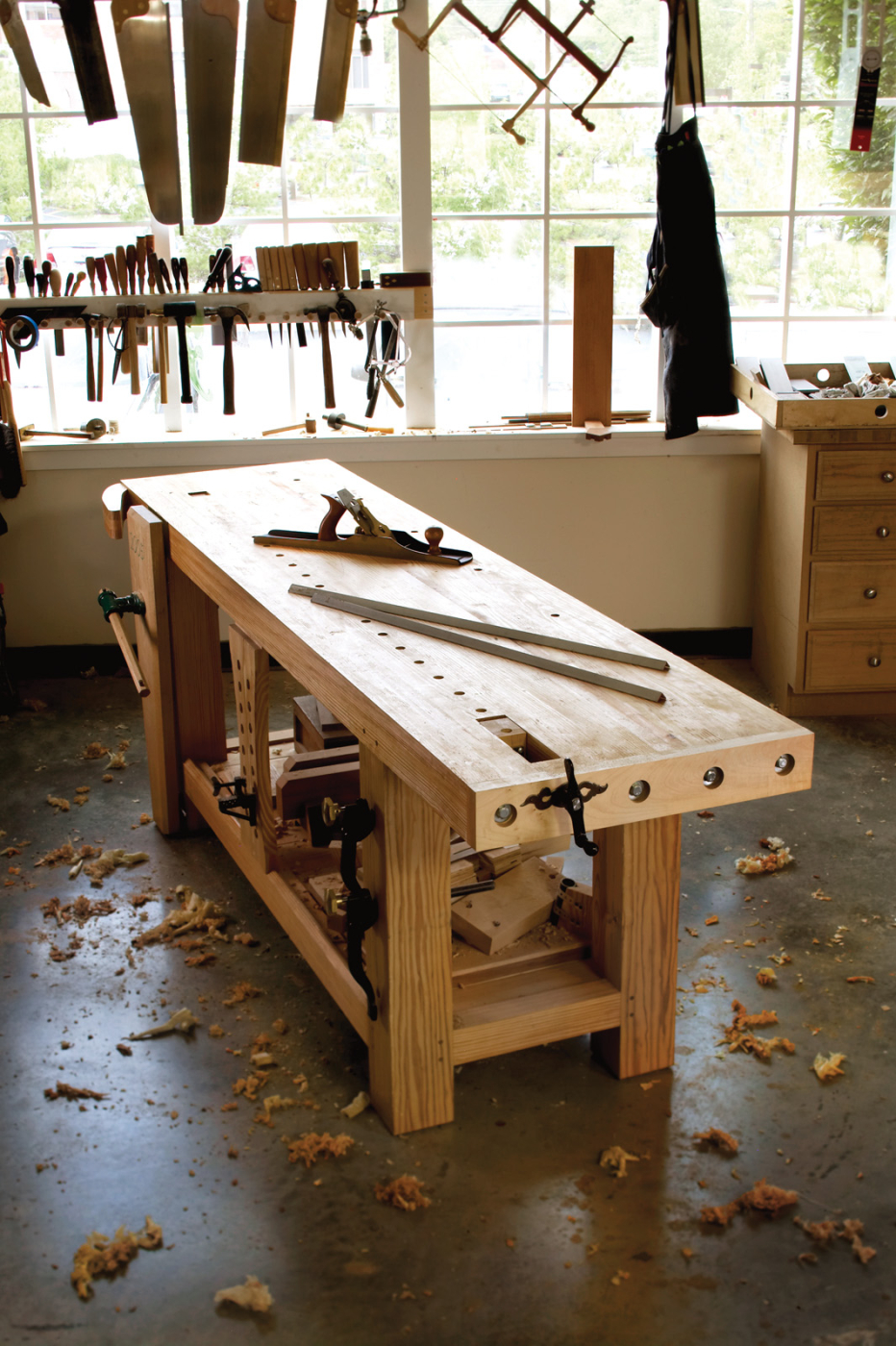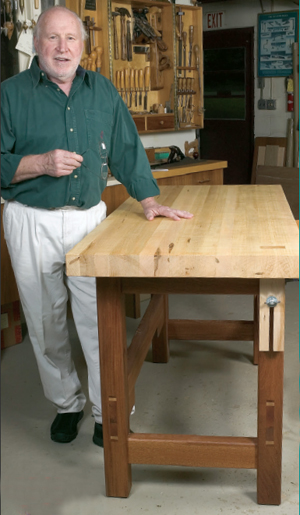When it comes to woodworking, one common question that arises is, “Does a woodworking bench need to be flat?” Well, my curious friend, let’s dive into this fascinating topic together and find out why a flat woodworking bench is essential for a woodworker’s success.
Imagine trying to complete a precise woodworking project on a wobbly or uneven surface—yikes! A flat woodworking bench provides stability, ensuring that your workpiece stays secure and steady as you work your magic. A wonky bench, on the other hand, can make your wood shimmy and shake, resulting in imprecise cuts and uneven joints.
Now, you might be wondering how to achieve that coveted flatness. Fear not! In our woodworking adventure, we’ll explore various tips and techniques for flattening and maintaining your workbench, so you can enjoy smooth sailing on your woodworking journey. So, grab your tools, put on your safety goggles, and let’s get started!
When it comes to woodworking benches, flatness is essential. A flat bench ensures accurate and precise work, especially when planing or cutting. Uneven surfaces can affect the quality of your cuts and joints. To ensure your woodworking bench is flat, follow these steps:
- Check the surface for any high or low spots.
- Use a plane or sander to level out any uneven areas.
- Verify the flatness with a straight edge or level.
- Repeat the process until the entire surface is flat.
- Regularly maintain the flatness of your bench to ensure optimal performance.

Does a Woodworking Bench Need to be Flat? Exploring the Importance of Flatness in Woodworking Benches
Woodworking is a craft that requires precision and attention to detail. One of the key elements in ensuring accuracy and quality in woodworking projects is having a flat and level work surface. This is where the importance of a woodworking bench comes into play. A woodworking bench serves as the foundation for all your woodworking tasks, and its flatness can greatly impact the outcome of your projects. In this article, we will delve into the reasons why a woodworking bench needs to be flat and explore the various methods and tools used to achieve flatness.
Understanding the Significance of Flatness in Woodworking Benches
A woodworking bench is more than just a table to hold your workpieces. It is an essential tool that provides stability and support for your woodworking projects. When you work on a flat surface, it ensures that your workpiece remains in the correct position throughout the entire process. This is crucial when it comes to joinery and measurements, as any unevenness in the bench can lead to inaccuracies and compromises in the final result.
The Impact of an Uneven Woodworking Bench
When your woodworking bench is not flat, several issues can arise. Firstly, it can cause instability, making it difficult to achieve precision cuts and accurate measurements. Additionally, an uneven bench can lead to inconsistent and wobbly joinery, compromising the overall strength and stability of your furniture or project. Moreover, it can affect the smoothness of your workpiece’s surfaces, resulting in uneven finishes and an overall subpar final product. Therefore, it is crucial to prioritize flatness in your woodworking bench to ensure the best possible outcomes for your projects.
Various Methods to Achieve Flatness in Woodworking Benches
Achieving a flat woodworking bench involves careful planning and execution. Here are some common methods used by woodworkers to ensure flatness:
1. Hand Planing: This traditional method involves using a hand plane to shave off any high spots and level the surface of the bench. It requires skill and patience but can be incredibly rewarding.
2. Power Tools: Power planers and belt sanders can also be used to flatten the surface of a woodworking bench. These tools allow for quicker material removal and are often favored by woodworkers who have larger benches or less time to dedicate to hand planing.
3. Router Jig: A router jig is a specialized tool that utilizes a router and a flattening bit to remove material from the bench surface and achieve flatness. This method is efficient and precise, making it a popular choice among woodworkers.
4. Jointer and Planer: If you have access to larger machinery like a jointer and planer, they can be used to flatten your woodworking bench. These tools are commonly found in professional workshops and can provide excellent results.
It’s important to note that achieving flatness is an iterative process. It may require multiple passes with different methods to achieve the desired level of flatness. Patience and attention to detail are key.
Tips to Maintain Flatness in a Woodworking Bench
Once you have achieved a flat woodworking bench, it is important to maintain its flatness over time. Here are some tips to help you keep your bench flat:
1. Regular Inspection: Take the time to inspect your bench periodically for any signs of warping or unevenness. Catching these issues early on can help you address them before they affect your projects.
2. Climate Control: Wood is a hygroscopic material, meaning it absorbs and releases moisture depending on the humidity levels. To prevent your bench from warping due to changes in humidity, consider maintaining a stable environment in your workshop, using dehumidifiers or humidifiers as necessary.
3. Protective Measures: To protect your bench from moisture or other potential causes of warping, use a sealant or finish on the surface. This can help to lock in the moisture content of the wood and maintain its stability.
4. Proper Storage: When not in use, cover your woodworking bench or store it in a dry area to prevent exposure to extreme temperature or humidity changes.
In conclusion, a woodworking bench does need to be flat to ensure accuracy, stability, and high-quality craftsmanship in your woodworking projects. Achieving flatness requires careful planning, the right tools, and attention to detail. Once achieved, maintaining flatness through regular inspections and proper care is essential. By prioritizing flatness in your woodworking bench, you can elevate your woodworking skills and produce exceptional results.
Key Takeaways: Does a Woodworking Bench Need to be Flat?
- A woodworking bench should be mostly flat to ensure accurate and precise work.
- Flatness helps in preventing wood movement and distortion of the workpiece.
- A flat bench surface allows for secure clamping and holding of materials.
- Woodworking tasks like planing, sanding, and assembly require a flat surface for optimal results.
- Regular maintenance and leveling of the bench ensure its flatness over time.
Frequently Asked Questions
Are you wondering if a woodworking bench needs to be flat? Look no further. We’ve got you covered! Check out the following questions and answers to gain a better understanding of the importance of a flat woodworking bench.
Why is it important for a woodworking bench to be flat?
A woodworking bench needs to be flat to ensure accuracy and precision in woodworking projects. When working with wood, any inconsistencies or unevenness in the bench can affect the quality of your work. If your bench is not flat, it can throw off your measurements, cause joints to be misaligned, and result in uneven surfaces.
Additionally, a flat bench provides stability and support for your workpieces. It allows you to securely hold your wood in place, preventing it from shifting or wobbling during the woodworking process. A flat bench is essential for achieving clean, professional-looking results in your projects.
Can I still use a woodworking bench that is not perfectly flat?
While it is ideal to have a perfectly flat woodworking bench, small imperfections can be acceptable depending on the type of woodworking you are doing. If your bench has minor deviations or uneven spots, you can still use it by making adjustments and accommodations in your work setup.
Using shims or leveling devices, you can level out certain areas of your bench to create a more even surface. However, keep in mind that major irregularities or a severely uneven bench may require repairs or a replacement. It’s best to assess the condition of your bench and determine if it meets your woodworking needs and standards.
How can I make my woodworking bench flat?
To make your woodworking bench flat, you can employ several techniques. One method is to use a hand plane or a power planer to remove excess material from high spots on the bench’s surface. This process is known as “flattening” the bench.
You can also make your woodworking bench flat by using sandpaper or a sanding block to level out any unevenness. This can be a more time-consuming process but can yield excellent results when done patiently and diligently. By sanding the high spots and checking for flatness, you can gradually bring your bench to a flat state.
What are the benefits of using a flat woodworking bench?
Using a flat woodworking bench offers numerous benefits. It ensures accuracy and precision in your woodworking projects, allowing for properly aligned joints and precise measurements. A flat bench also provides stability and support, preventing your workpieces from moving or wobbling during the woodworking process.
In addition, a flat bench makes it easier to create smooth, even surfaces on your wood. Whether you’re sanding, planing, or performing other woodworking techniques, a flat bench acts as a reliable foundation for your work. Ultimately, using a flat woodworking bench can enhance the quality and craftsmanship of your projects.
Should I buy a pre-made flat woodworking bench, or can I build my own?
Whether you should buy a pre-made flat woodworking bench or build your own depends on your individual needs, skills, and available resources. Pre-made benches often come with flattened surfaces, making them convenient if you’re seeking immediate accuracy and stability.
However, building your own woodworking bench allows you to customize it according to your requirements. You have the freedom to choose the size, materials, and features that best suit your woodworking style. Building your own bench also provides a valuable learning experience, allowing you to develop your woodworking skills further.
If you’re a beginner, a pre-made bench might be a good starting point. As you gain more experience and confidence, you can consider building your own bench to cater to your specific needs and preferences.

Summary
Woodworking benches do not necessarily need to be completely flat, but they should be relatively flat to ensure accurate and precise work. A completely flat surface may be ideal for some tasks, while a slightly uneven surface can be better for others. It all depends on the type of woodworking you are doing and the specific project at hand.
When choosing a woodworking bench, consider your personal preferences and the type of work you will be doing. Look for a bench that is sturdy and stable, with a surface that meets your needs. Remember, there is no one-size-fits-all answer when it comes to woodworking benches, so find what works best for you and your projects.
